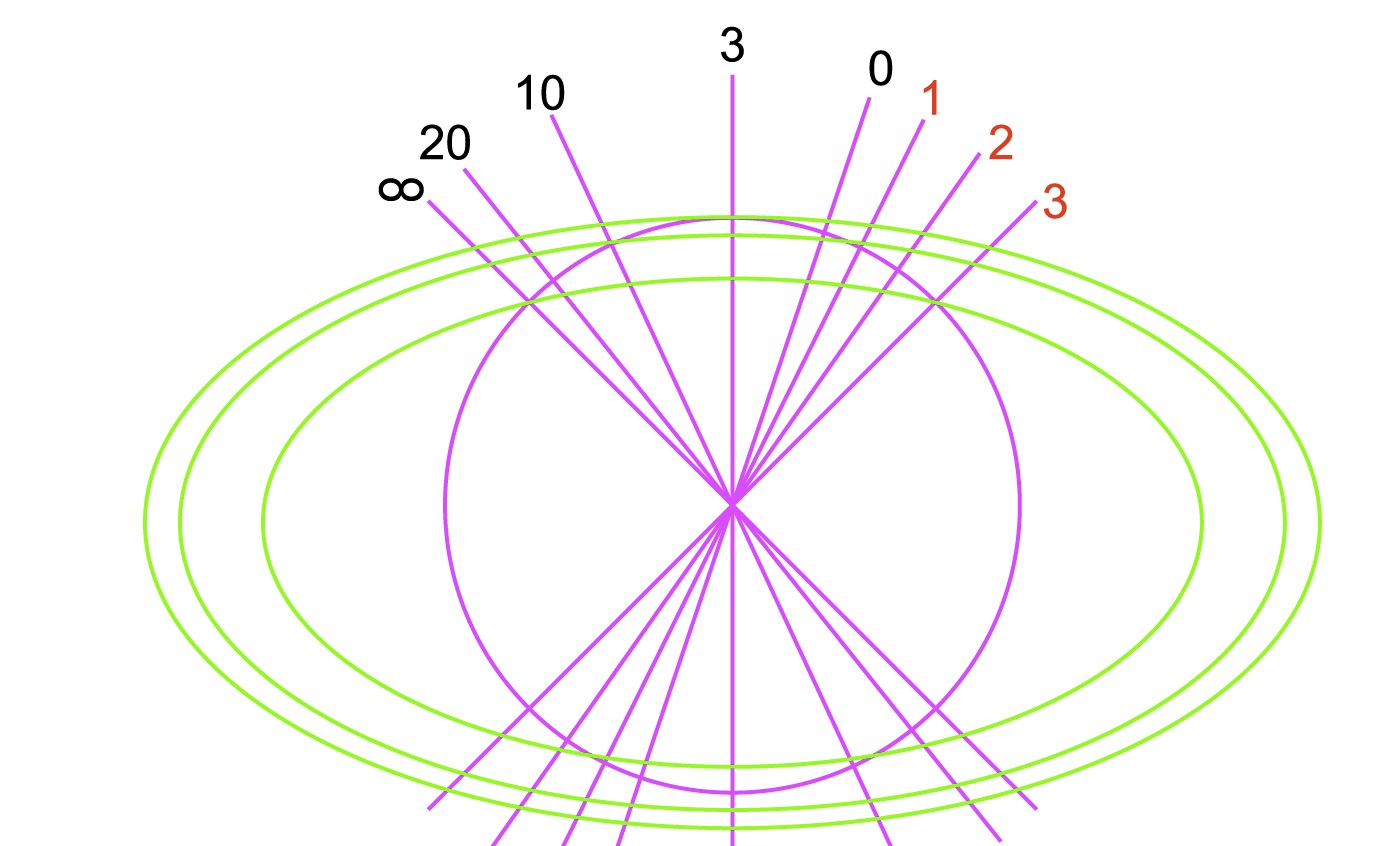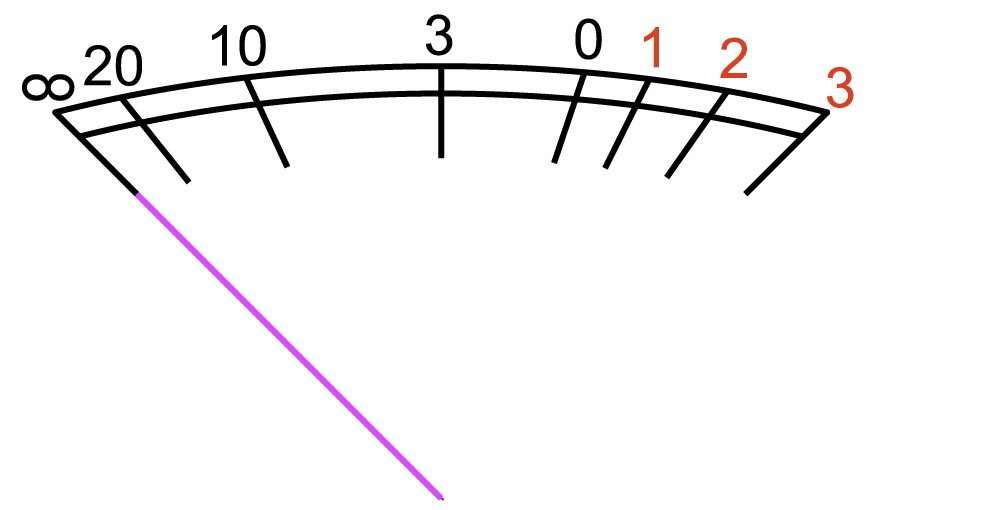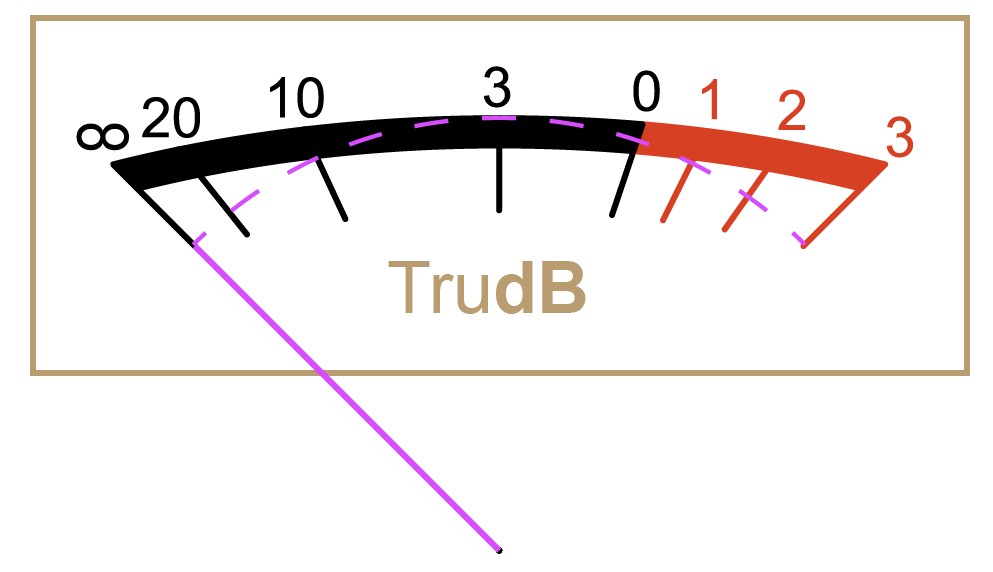The arc where the dB marker lines and number reside is not at all circular. The needle of the meter rotates around a fixed axis but its rotation center is totally different. This is typical in audio devices, round meter scale is rare.
The meaning of the scale in VU (=volume unit) meters has some standards but in consumer devices good looks laid out by artists override technical requirements. So, in consumer devices one should compare the readings only to the readings in the same device.
Having an artistically refined custom "volume unit" scale is not a fraud as long as no claim of obeying a certain standard nor scale division as decibels isn't presented.
The next image hopefully gives some idea of non-round VU-meter designs:
The green ellipse is matched (by eye) to the arc of the numbers and marker lines. The markers point to the axis of the needle. The cyan lines are drawn to find approximately the axis of the needle.
The needle is the radius of the magenta circle, but the revolution range is typically only 90 degrees in consumer devices.
How to calculate the exact needle positions is actually off-topic here but the formula is simple for meters which get their signal from perfectly designed analog circuits which rectify the signal linearly without the original diode rectifier non-linearity. If we say the needle position for totally silent signal i.e. far left is zero degrees and for maximum (=+3dB) signal it's +90 degrees we have the following formula:
the needle position angle = 63,64 degrees * 10^(D/20)
D is the number of decibels.
That 60,64 degrees in the formula is actually 90 degrees divided by sqrt(2) as persons who know decibels surely see.
The ideal needle positions for 90 degrees max. deflection are in the next Excel table. The calculation accuracy is 0,1 degrees or better:
The smallest commonly shown number is -20dB in VU-meters. The needle position for it is 6,4 degrees. As you see, in my previous image the -20dB marker is placed at less than 6,4 degrees apart from zero angle and the -3dB marker is far from 45 degrees. It's not possible to decide here is it an attempt to compensate not so perfect (=non-linear rectifier) measuring electronics or is it an artistic decision for better look. At least there's no mention of decibels.
A rudimentary design example:
The next image has green "artistic" ellipses, a magenta circle to show the actual rotation path of the needle and some magenta lines for a few needle position markers.
The green ellipses are made by scaling the smallest to 2 bigger sizes. They have a common center but they are aligned only horizontally with the needle parts.
In the next image the all lines and curves are splitted with Patfinderare selected and Pathfinder panel's Outline and recoloredis applied:
Pathfinder panel's Outline splits every line and curve at every crossing and removes all colors. The result is a group. After ungrouping the splinters are recolored and the extras are deleted. The numbers are inserted manually.
In the next image the overdrive area and non-distorting area are colored with the Shape Builder + by selecting the stroke colors, the intended device front panel hole is drawn and the needle and it's possible path are shown as magenta:






